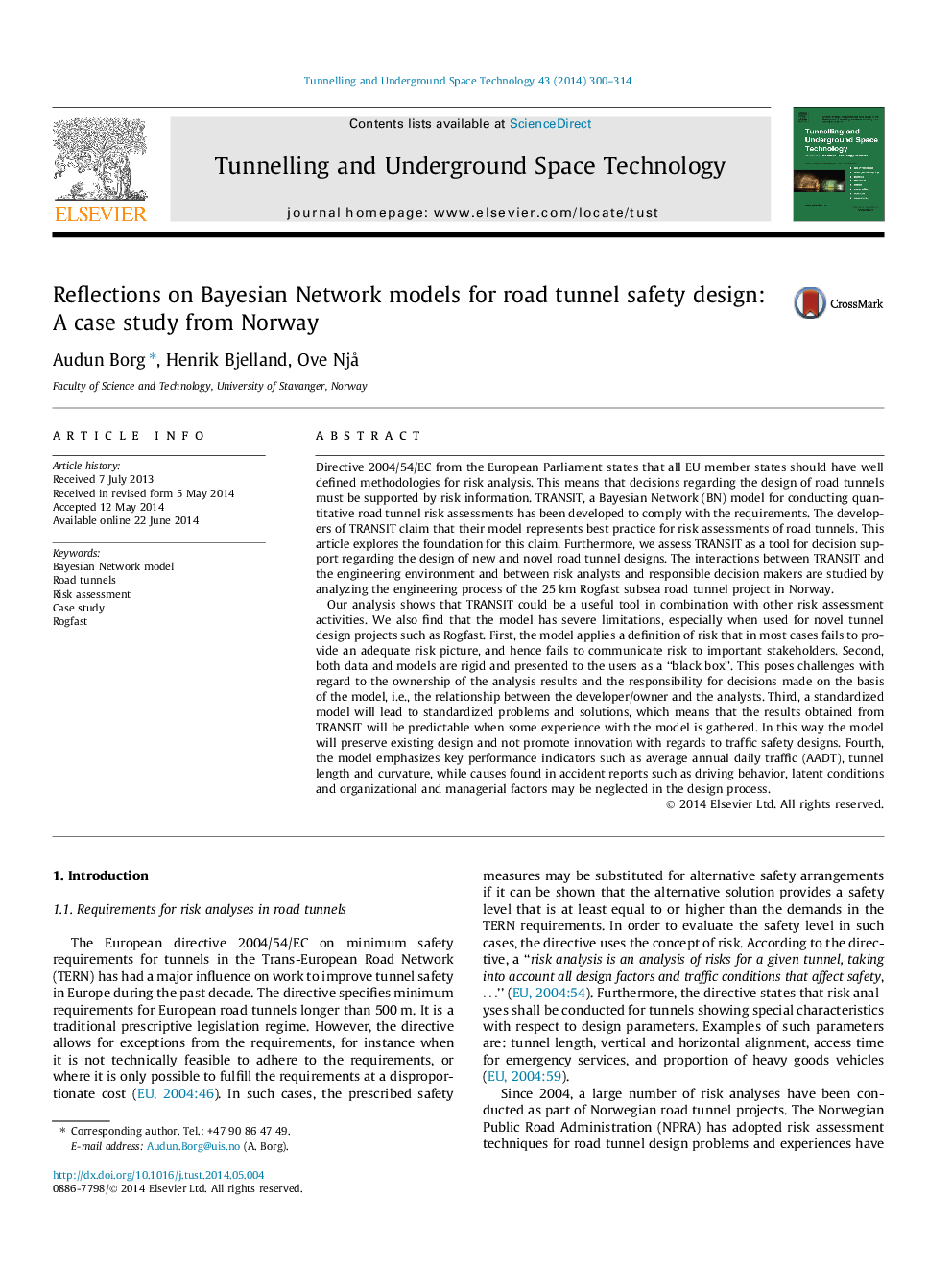| کد مقاله | کد نشریه | سال انتشار | مقاله انگلیسی | نسخه تمام متن |
|---|---|---|---|---|
| 311856 | 534146 | 2014 | 15 صفحه PDF | دانلود رایگان |
• Evaluation of Bayesian Network model for road tunnel safety design.
• Context of best practice tool for decision support for novel tunnel design.
• Case study of the 25 km subsea road tunnel project in Norway.
• Identifies challenges with the use of generic risk assessment models.
• The methodology lacks treatment of uncertainty for given tunnels.
Directive 2004/54/EC from the European Parliament states that all EU member states should have well defined methodologies for risk analysis. This means that decisions regarding the design of road tunnels must be supported by risk information. TRANSIT, a Bayesian Network (BN) model for conducting quantitative road tunnel risk assessments has been developed to comply with the requirements. The developers of TRANSIT claim that their model represents best practice for risk assessments of road tunnels. This article explores the foundation for this claim. Furthermore, we assess TRANSIT as a tool for decision support regarding the design of new and novel road tunnel designs. The interactions between TRANSIT and the engineering environment and between risk analysts and responsible decision makers are studied by analyzing the engineering process of the 25 km Rogfast subsea road tunnel project in Norway.Our analysis shows that TRANSIT could be a useful tool in combination with other risk assessment activities. We also find that the model has severe limitations, especially when used for novel tunnel design projects such as Rogfast. First, the model applies a definition of risk that in most cases fails to provide an adequate risk picture, and hence fails to communicate risk to important stakeholders. Second, both data and models are rigid and presented to the users as a “black box”. This poses challenges with regard to the ownership of the analysis results and the responsibility for decisions made on the basis of the model, i.e., the relationship between the developer/owner and the analysts. Third, a standardized model will lead to standardized problems and solutions, which means that the results obtained from TRANSIT will be predictable when some experience with the model is gathered. In this way the model will preserve existing design and not promote innovation with regards to traffic safety designs. Fourth, the model emphasizes key performance indicators such as average annual daily traffic (AADT), tunnel length and curvature, while causes found in accident reports such as driving behavior, latent conditions and organizational and managerial factors may be neglected in the design process.
Journal: Tunnelling and Underground Space Technology - Volume 43, July 2014, Pages 300–314
